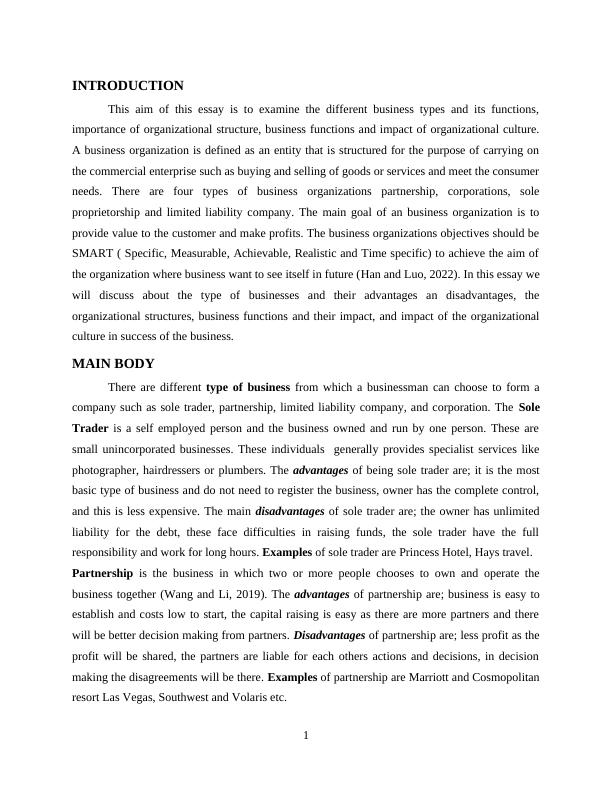Business Types and Functions: Examining Organizational Structure, Functions, and Culture
Added on 2023-06-05
7 Pages2138 Words470 Views
End of preview
Want to access all the pages? Upload your documents or become a member.
Types of Business Organizations and Dispute Resolution Methods
|16
|986
|253
Business Organizations: Types, Structures, Functions, Culture, and Industry Practices
|9
|2133
|424
Types of Business, Organizational Structure, Business Functions and Organizational Culture
|9
|2329
|89
Business Structures in Australia: Partnership and Company
|3
|811
|71
Types of Business Organizations: Formation, Management, and Funding
|15
|777
|110
Advantages and Disadvantages of Business Enterprises and Organizational Structures in Hospitality Industry
|8
|2176
|211



